Hal Hatch has been pinhooking and selling horses at the 2-year-old sales since 1990. Based near Ocala, Fla., he operates as Halcyon Hammock Farm.
At last year's Ocala Breeders' Spring Sale of 2-Year-Olds in Training, Halcyon Hammock, agent, sold Hip 134, a Union Rags filly out of Callmethesqueeze, by Awesome Again, to Lea Farms for $90,000. That filly, who would later be named Power Squeeze, won the $150,000 Cash Run Stakes at Gulfstream Park, the $150,000 Suncoast Stakes at Tampa Bay Downs, and the $250,000 Gulfstream Park Oaks (G2). Power Squeeze rides a four-race win streak into an expected start in the May 3 Kentucky Oaks (G1).
Halcyon Hammock also consigned multiple grade 1 winner and $2-million earner Starship Jubilee at the 2015 OBS April sale. The Florida-bred filly by Indy Wind won the Sunshine Millions Filly & Mare Turf three times, three Sovereign Awards as Canada's champion turf mare and was named Canadian Horse of the Year in 2019.
Other black-type horses consigned by Halcyon Hammock over the years include grade 3 winners Pamina and Pricedtoperfection; multiple stakes winners Uptown Twirl and Piedi Bianchi, and grade 1-placed winner Identity Politics.
BloodHorse caught up with Hatch before this year's OBS Spring Sale to talk about his experience as a pinhooker and his approach to selling horses at the 2-year-old sales.
BloodHorse: Where did you grow up and how did you get your start in the horse business?
Hal Hatch: I grew up here in Florida. My family are all Floridians. I was born in 1968, so I guess that makes me 55 now. In the 1980s I was actually being dropped off from the school bus at a Quarter Horse farm every day. This was when I was in my early teens before I could drive.
Through riding Quarter Horses, I was introduced to an old guy named John Scott. He was raising Florida-breds back when Florida-breds were the thing to do. You could make good money on breeders' awards then. John was a good horseman. He had probably 150 mares and a couple stallions, and he took me under his wing. I started riding and breaking horses, and we did it the old school way. These were horses who hadn't been through a sale, and they were raised in fields. We caught them and got a saddle on them and would ride them. And we'd breed mares in the afternoon. I learned a lot there.
So I bought a couple horses under his credit and pinhooked them. I made a little money on one and lost on the other. And that was the start.
The following year (1991) John and I made a deal on a group of horses and I got seven of them for breaking and training. One of them was named Memo Flash. At the time I was galloping horses for Hooper Farm in the morning, and I had sent Memo Flash to Belmont to run, and Mr. (Fred) Hooper had a horse in the race with me. I'm his mere exercise rider, but my horse won the race big, and Mr. Hooper was second. So it's been fun from the beginning. There's been a lot of ups and downs, but that's par for the course in this business.
BH: Congratulations on selling a Kentucky Oaks horse at last year's OBS Spring sale. What do you recall about Power Squeeze?
HH: This was a horse purchased by Monarch Farm ($50,000 KEESEP), who I sell horses for. She was just a plain wrapper kind of horse, but she went through the process very easily. She was strong and nothing upset her. She went in :10 1/5 and didn't move bad.
I don't mind Union Rags at all, but he hadn't been real commercially popular recently. Trainer Jorge Delgado and Lea Farm were interested, and I represented her as a good horse to them.

BH: It looked like a nice controlled, focused work. What does a perfect breeze look like to you? What do you tell your riders?
HH: Not a lot of whipping and driving, and letting the horse work as fast as it can without hurting him. We're under a lot of scrutiny and I've recognized that for a long time. Most of my horses I know are going to try hard on their own, and they just need to be steered and encouraged a little bit to run as fast as they can.
It's a balance because we're trying to go fast, but it's also part of my job to keep the horse sound. I've had a lot of first- and second-time winners come out of my consignment, and I'm proud of that. It's important they are well-conditioned and the buyer can go on with them.
BH: When you had Starship Jubilee at the 2015 OBS April sale, she was a buyback for $34,000, but she went on to be an amazing horse, with 19 career wins and $2,093,069 in earnings. What did the market miss about her?
HH: She was small, and she just got overlooked. I didn't overlook her, but there were people who wouldn't give her a shot because of her size. She was nimble and very athletic. She was easy on herself.
BH: Who is the Power Squeeze or Starship Jubilee in your consignment this year?
HH: I've got one—Hip 1051. She is a full sister to Rombauer, who was a Preakness Stakes (G1) winner. She worked :10 flat and galloped out amazing. She has a great family, a good walk, and she looks like a real racehorse. I know Twirling Candy. I sold (multiple stakes winner) Uptown Twirl, and they are strong-willed fillies. This is a good one.
BH: Where is your farm and what is your operation like?
HH: I bought a little farm in summer 1991 just outside Williston, Fla., in Bronson. There is a swimming facility, a little better than a half-mile track, and 85 stalls.
This farm has been very good to me. I was able to take care of my grandmother here 'til she was 96. And my mother is here now and she is 81. I also have two grandchildren here. Getting this property, no matter what's happened, the highs and lows, I've never had to put up a 'For Sale' sign.
I also have a barn at The Williston Mile training center.
BH: I see a lot of $30,000 to $50,000 yearlings on your list of successful pinhooks. I believe the most expensive of the stakes horses you bought was $115,000 for Identity Politics, whom you sold to Klaravich Stable for $350,000 and he finished second in the 2018 Malibu Stakes (G1) for them. What price range are you most comfortable operating in?
HH: A safe zone for me over the years has always been $50,000 to $100,000. That range has served me well. The less you pay, the less you worry about them. It's very hard to buy in that range now.
BH: What are the most important things you look for in a yearling to pinhook? What do you see first in a horse when it walks out to you?
HH: I need top line and length of neck. They need decent bone and size, and I need a good walk and a good step. They need to be stepping along not only fluently but covering some ground. I don't have to have a huge overstride. I just need a good length of step and a good fluid walk without a lot of wasted motion.
It's hard to describe what you see in a horse. It takes me about one second if I don't like one. And a wonderful horse is a wonderful horse. You see him in one second and you love him. Then there's everything in between that you're trying to negotiate in your head. You have to think about whether they will change and whether you can improve on a horse. And a big thing is whether they can be bought at a price where you can make money. That's the huge one for pinhooking.
As pinhookers we are picking horses that look fast, and when you buy a horse that looks fast, and you're experienced at doing this, it generally works out. The OBS track is a nice track for horses to get over.
BH: How much do you weigh their behavior and mentality?
HH: Oh, a lot, a lot. There is something about a horse's eye and the shape of its head and its ear carriage. The eye means a lot. It tells me a lot, and I don't know how to describe that to you, but there is significance in the eye to me. Most of the time a smart horse has a certain look to them.
Of course you're only hoping when you buy a smart- looking horse you are increasing the probability of getting a nice horse, but I've learned that doesn't mean you're always getting one.
BH: Talk about your process of converting a yearling into a 2-year-old in training horse.
HH: I start working with them right after we get back from Keeneland in the first part of October. We group them together, just depending on how they are. The more gentle ones that go easier we put a saddle on them and get them used to having someone on their back in the stall, get them used to turning in the stall.
From the stall it's to the round pen. They are broke to a pony before they graduate the round pen. Then they go to the paddock and then to the racetrack.
On average I probably break 50 horses a year, including sale horses and horses going to the track. The sale horses are generally a certain physical type and ready to go early. The horses going to the races can be different types, and some of them deserve more time.
BH: Is there anyone on your team you would like to mention?
HH: I have several highly valued employees, but one particular woman has helped me throughout the entirety of my business. She was my friend and I rode horses with her before I even bought this farm. She is my secretary and my assistant. Her name is Cheryl Engle. She's been with me and been my friend and helped me since I think 1989. She keeps me organized and she also tells me how I need to make more money. She says, "You better find some money!"
BH: Is there anything else you would like for people to know about you?
HH: I just love horses. There's nothing more I'd rather do. I've been very lucky to do something that I love and enjoy every day of my life. Looking back, if I died tomorrow, I've been very happy. All I've ever wanted to do was mess with horses. It's been a dream come true.








